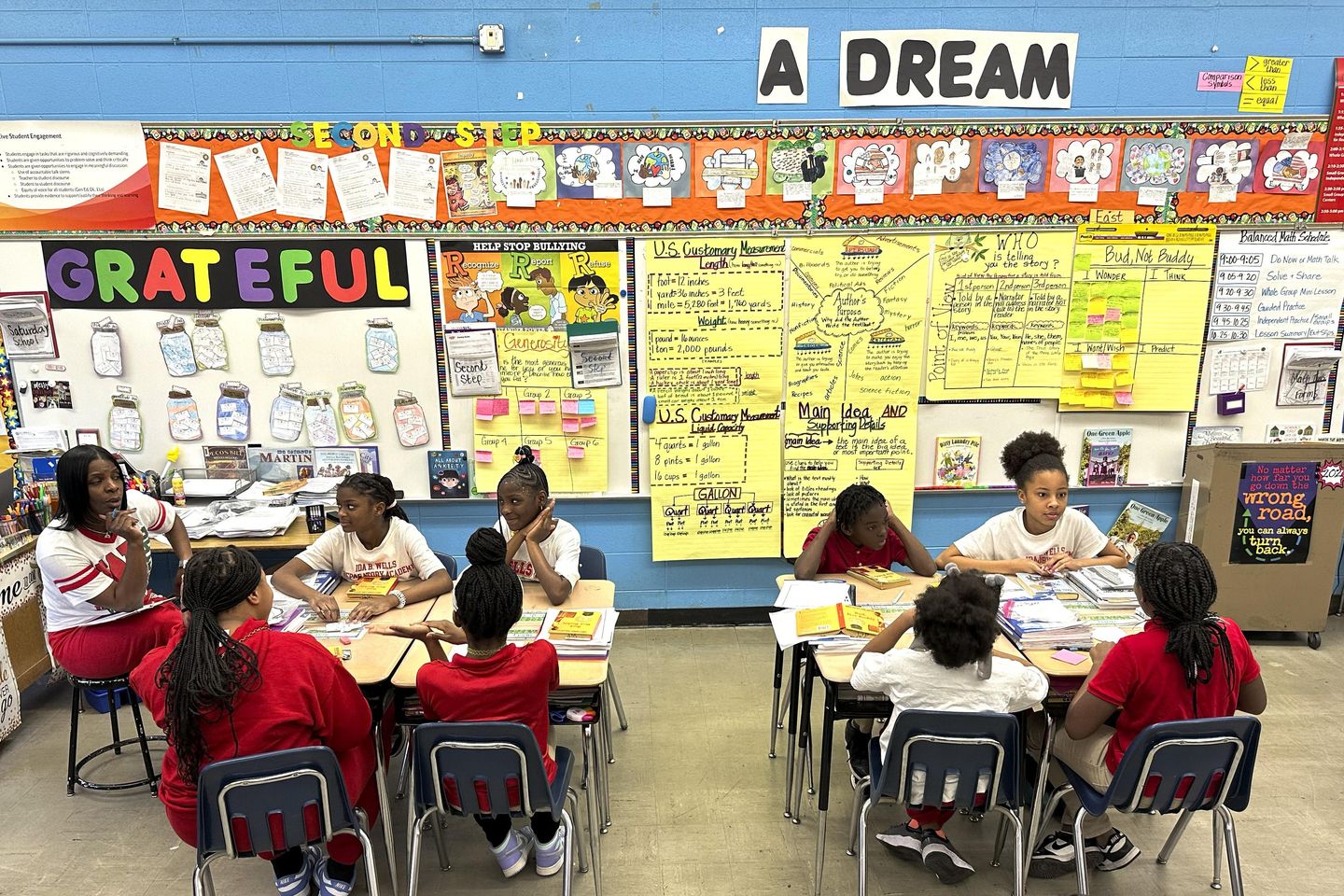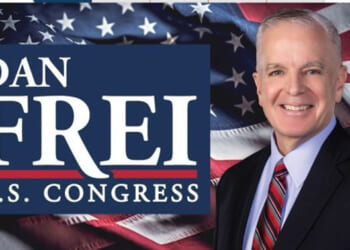
The average public school teacher salary rose by 3.8% to $72,030 last year, but wages continued a years-long trend of lagging behind inflation, the nation’s largest teachers’ union reported Tuesday.
In an annual report, the National Education Association also found that the average new teacher earned $46,526 in the 2023-24 school year. That’s up 4.4% from the year before and the highest in 15 years, yet still $3,728 below 2008-09 levels after adjusting for a 3% inflation rate.
According to the report, real wages have dropped 5% for teachers over the past decade and will likely fall faster due to recent Trump administration cuts to federal education funding. The NEA projects a 3% annual wage growth in 2024-25, with salaries rising fastest in union-negotiated contracts.
“This hard-won progress is now under threat from the Trump administration’s careless, callous, and reckless actions, and students will pay the price,” said NEA President Becky Pringle. “Their plans to gut public education will rip funding from public schools and roll back these very same gains to help provide competitive and professional pay to educators.”
Since returning to the White House in January, President Trump has moved to eliminate the Department of Education and cut billions of dollars in education funding to purge wasteful spending.
In a statement to The Washington Times, a spokeswoman for Education Secretary Linda McMahon accused the NEA of “knowingly peddling false information … to create unnecessary panic” about the cuts.
“There is no plan to gut public education,” said Savannah Newhouse, an Education Department spokeswoman. “Rather, President Trump and Secretary McMahon’s goal is to cut the federal red tape to ensure more dollars flow to the states, students, and teachers directly.”
Several education experts not involved in the NEA report said the findings confirm that U.S. teaching salaries are no longer adequate to attract the best talent.
They also noted that public schools have lavished tax dollars on non-classroom staff and resources for years instead of raising salaries.
According to an analysis from Georgetown University’s Edunomics Lab, a surge in non-teacher staff hires drove K-12 school districts to grow from 5.9 million employees nationwide in the 2014-15 academic year to 6.5 million in 2023-24. Over the same period, public school enrollment dropped from 47.1 million to 46.3 million students.
“The addition of more staff competes for budget dollars, making it harder for districts to grant stronger pay raises,” said Marguerite Roza, an education finance professor who directs the Edunomics Lab. “Looking ahead, leaders may want to rethink that strategy, and instead pursue a strategy of bringing in the strongest teachers and paying them well to keep them.”
Conservative analysts have long pointed out that the U.S. lags behind the academic performance of other nations despite spending more per student.
On Tuesday, they defended the Trump administration’s cuts to K-12 research grants and diversity, equity and inclusion programs.
“With student enrollment declining due to declining birth rates, school districts will not be able to continue the decades-long hiring spree demanded by teachers unions,” said Virginia Gentles, an education analyst at the Trump-aligned Defense of Freedom Institute for Policy Studies. “If the NEA truly wants teachers to make more money, local union affiliates should focus negotiations on increasing salaries rather than increasing employees.”
Michael J. Petrilli, president of the right-leaning Thomas B. Fordham Institute, an education think tank, said it’s unsurprising that inflation has continued outpacing teaching salaries “given its rapid rise during the Biden Administration.”
“But the NEA also has itself to blame, as its local affiliates consistently prioritize actions other than raising salaries, such as making health and retirement benefits more generous, and hiring dramatically more staff,” Mr. Petrilli said.
’Decline in the teaching profession’
School districts nationwide will gut billions of dollars from staffing, program and supply budgets heading into summer vacation as they cope with the Trump administration ending access to COVID-19 stimulus grants.
The federal government allocated $189.5 billion in Elementary and Secondary School Emergency Relief grants for K-12 campuses to implement public health restrictions and offset historic learning losses during pandemic-induced campus lockdowns.
According to education insiders, many large public school districts with declining enrollments used grant money to plug budget holes and hire full-time staff, even after the pandemic ended.
“They were told it would dry up and many articles were written to warn against the pending fiscal cliff,” said Nina Rees, a longtime public charter school advocate and former Education Department official in the George W. Bush administration. “What’s sad about this whole thing is that many of the activities that schools invested in don’t appear to have had an impact on student achievement.”
Roughly 1 million students transferred to private schools or homeschooling during pandemic lockdowns, adding to enrollment declines driven by falling birth rates.
Meanwhile, teacher wages have fallen below those of most other college graduates.
“This is paired with a documented decline in the teaching profession, making it difficult to recruit the number and quality of candidates we need in the teaching workforce,” said Gema Zamarro, a K-12 education market researcher at the University of Arkansas. “In this context, increasing teacher salaries and/or creating more attractive compensation packages could help.”
The NEA report noted that 16.6% of U.S. school districts offered starting salaries of less than $40,000 last year, a drop of more than 10 percentage points from the prior year.
Overall, 69.9% of school districts offered starting salaries below $50,000 per year, with 87% of teachers responding to an NEA survey expressing concern over low pay.
Heather Peske, president of the National Council on Teacher Quality, predicted the decline in real wages would hurt teacher retention and hiring unless public schools make drastic changes to how they spend money.
“State and district leaders must lead the way, starting with smarter strategies like raising salaries where the need is greatest, especially in special education, teaching English learners, and higher-poverty schools,” Ms. Peske said. “They should also stop paying extra for teachers with master’s degrees — which don’t guarantee effective teaching — and put that towards salary increases for the teachers they need most.”












